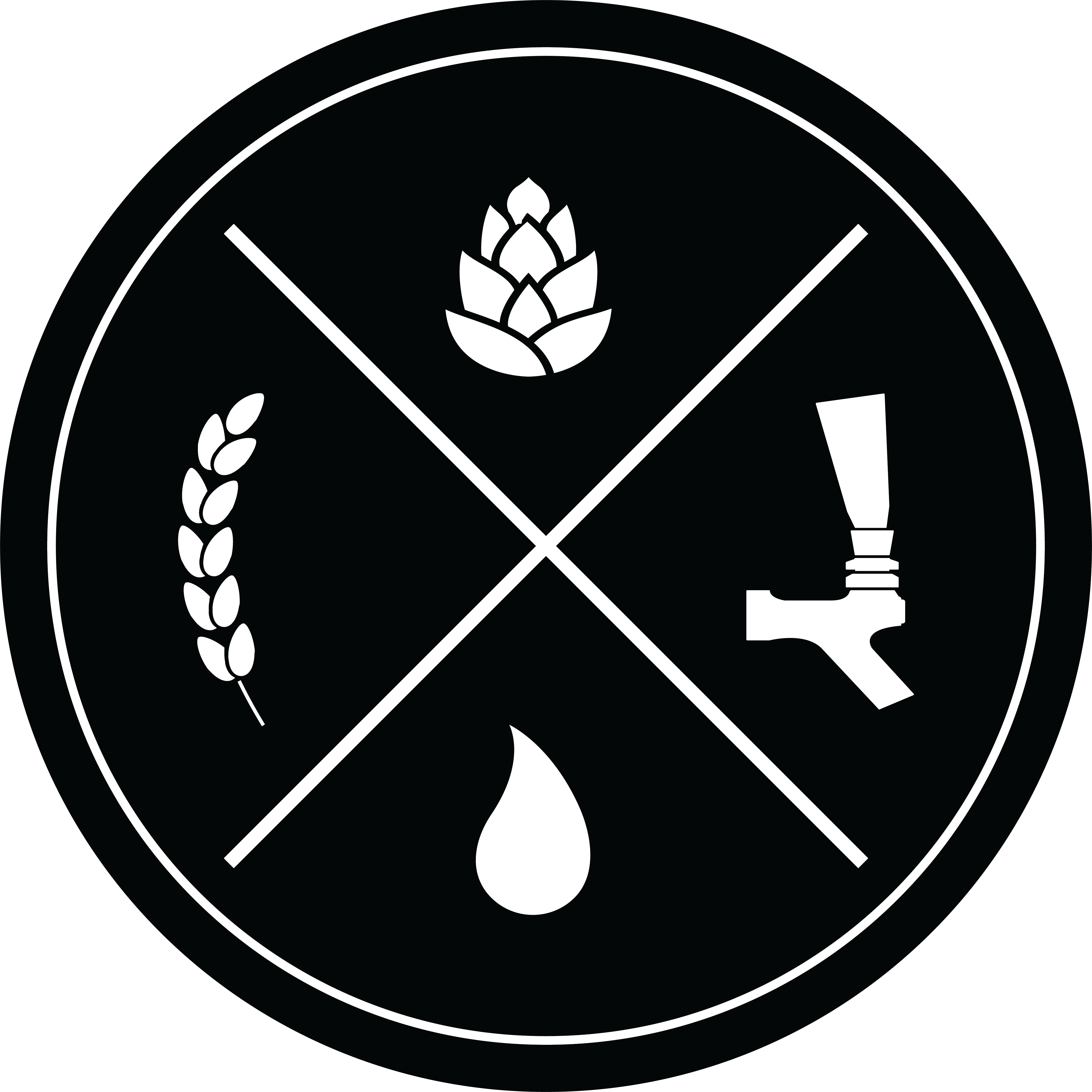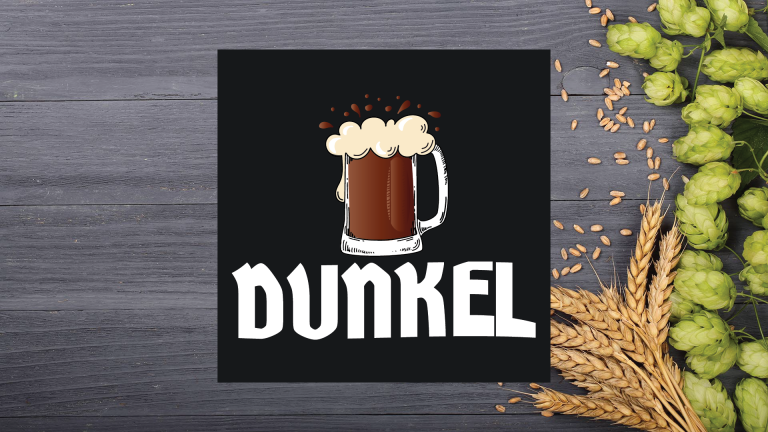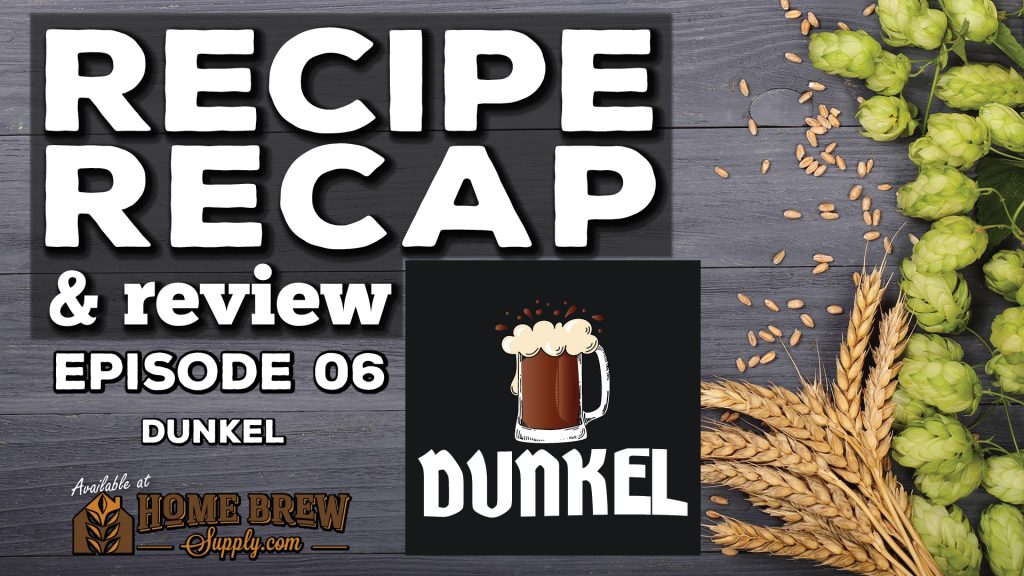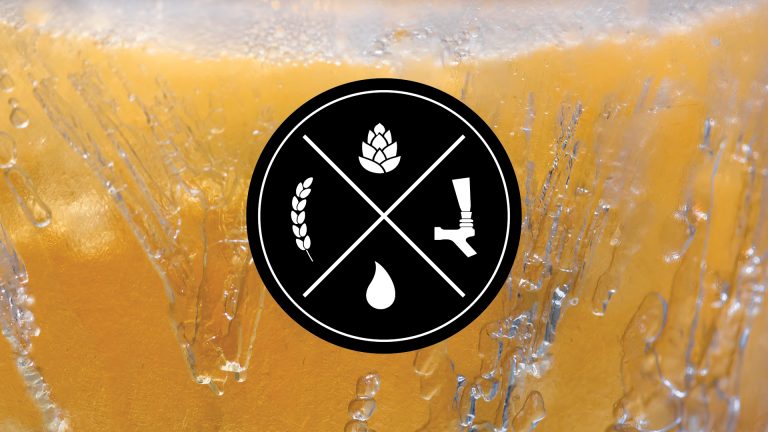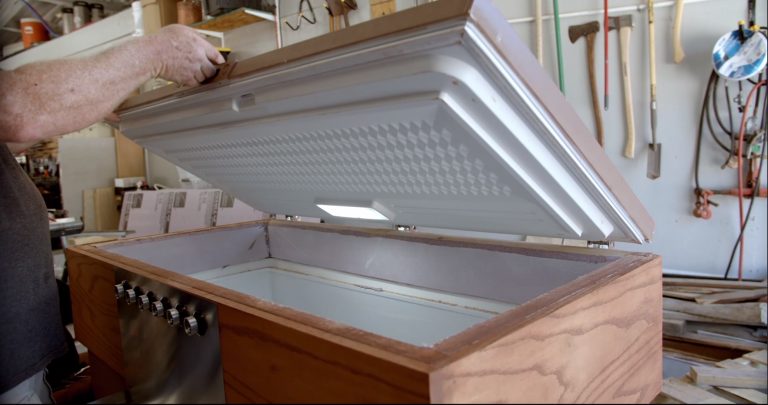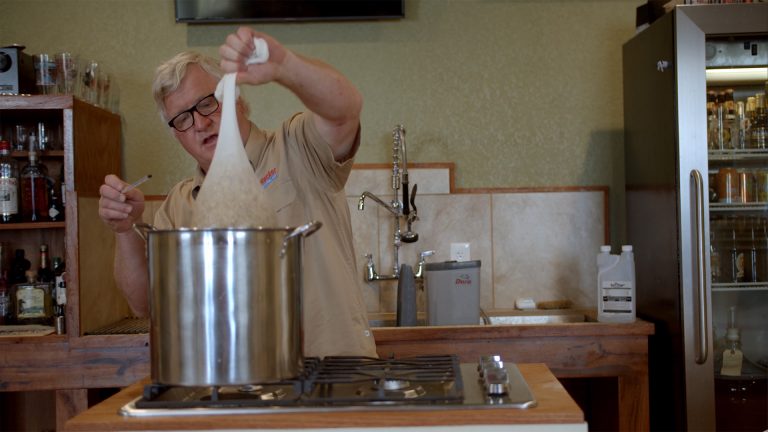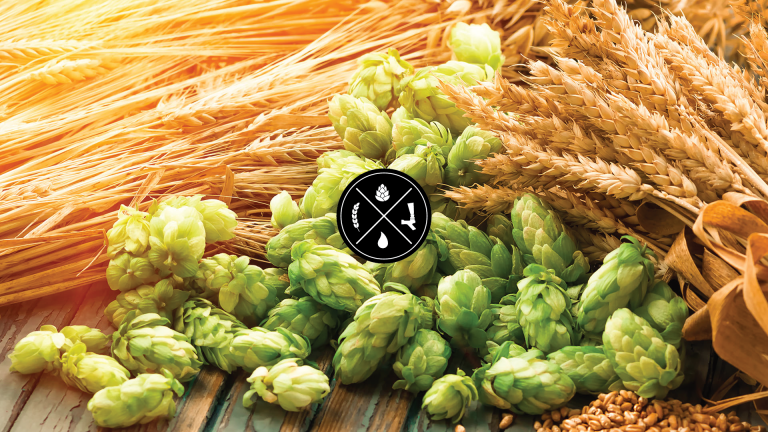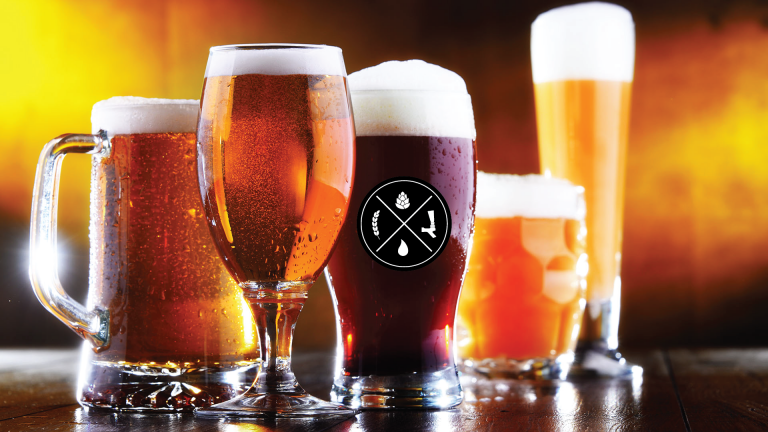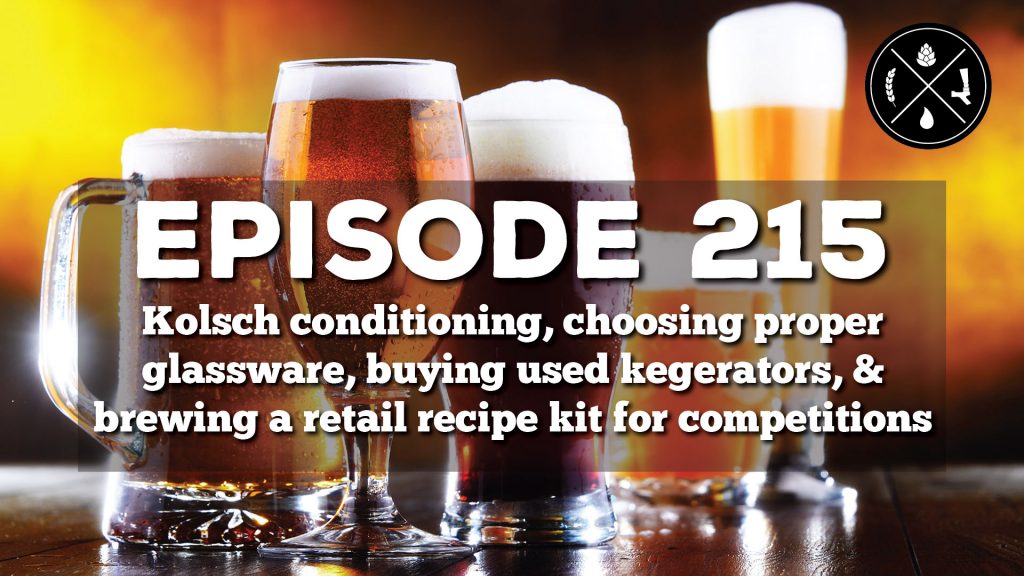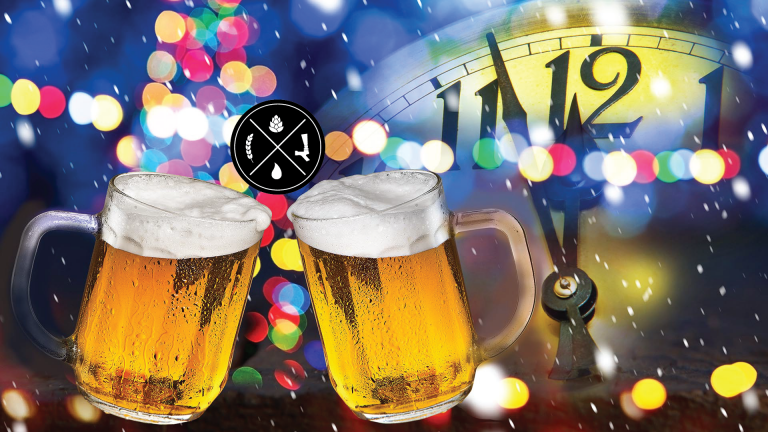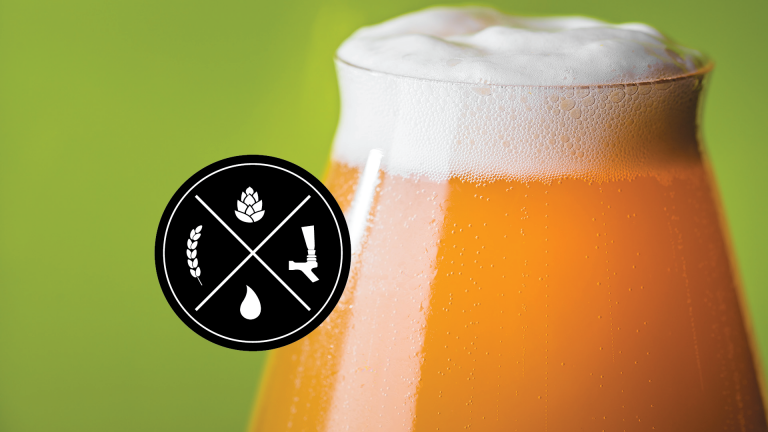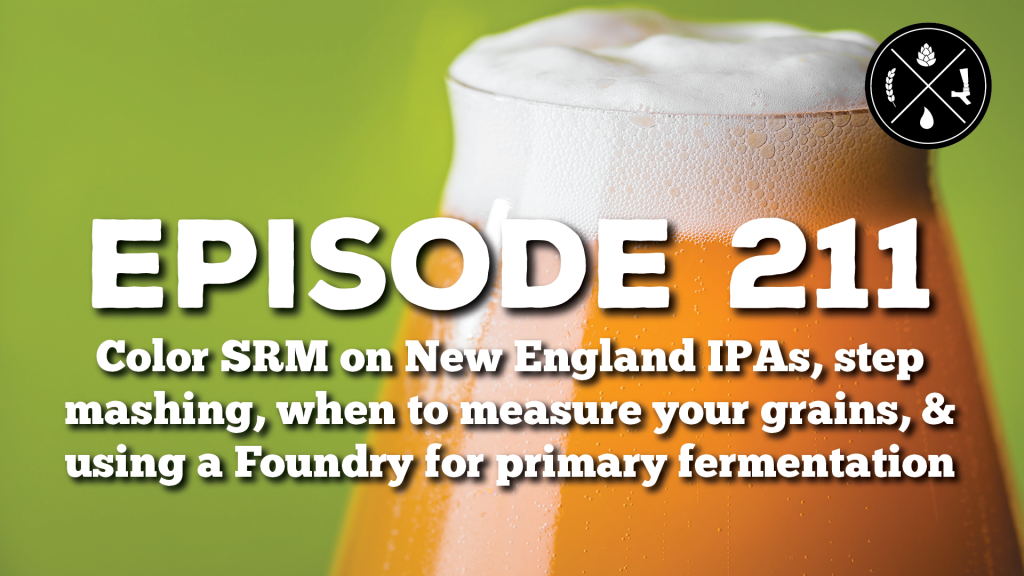Dealing with frozen beer, bottling nitro stouts with a beer gun, dislodged airlocks, and placing propane burners on wood platforms – Ep 217
Thanks for coming back, friend!
Welcome to our Homebrew Happy Hour podcast… the podcast where we answer all of your home brewing questions and discuss anything related to craft beer!
A SUBTLE REMINDER:
If you appreciate the things we do here at Homebrew Happy Hour, consider joining our Patreon community! Not only will you be supporting our efforts, but you’ll also receive exclusive perks such as HUGE discounts on HomebrewSupply.com and Kegconnection.com, welcome packs with our merch, discounts to BrewersFriend.com, and lots more! Click the link and join today — https://www.patreon.com/bePatron?u=21132635
On Today’s Show:
January FLEW by, didn’t it?! It’s crazy to me how quick time seems to pass these days. As you may have heard me mention on previous episodes, I’m in the middle of moving a town over so all of my free time has been packing up our house, purging things I don’t want to take with us, and getting ready to move. It’s been crazy!
Thankfully, my favorite part of the week is producing new episodes of this show and I’m also especially thankful for Todd and James because, without them, I couldn’t possibly begin to answer all of the questions in our HHH inbox. To be fair, even when my brain isn’t fried and overloaded with house selling and house buying and moving stuff, I probably couldn’t answer most of your questions then either.
This week was fun as we discuss a question from a listener who discovered that they had accidentally frozen their keg of beer. We also got a question from a new Blichmann Beer Gun owner about the possibilities of using the device to bottle from a keg of nitrogenated beer. Then, we discussed a question about what might happen if your airlock becomes dislodged during fermentation. Finally, we wrap up the show with a question about the potential safety hazards of using a propane burner on top of a wood pallet base.
We want to hear from you!
If you have a question that you’d like us to discuss on a future episode, please click on the “Submit a Question” link at the top of our website or you can now call in your questions via our questions hotline @ 325-305-6107 and leave your message after the beep. This is a friendly reminder that, if we choose your question for a future episode, we give you a $25 gift card to that episode’s sponsor!
Let us know what you think and enjoy the show!
cheers,
joshua
PS – here’s a link to the shelving unit James mentioned: https://www.homedepot.com/p/HDX-Chrome-3-Tier-Steel-Wire-Shelving-Unit-24-in-W-x-30-in-H-x-14-in-D-E356075OAH3RTH/313360978
Here’s a pic of Todd’s sweeeeeet set up: 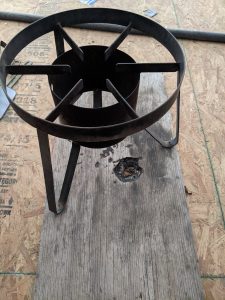
————————–

Today’s show is brought to you by HomebrewSupply.com! HBS has all of your favorite recipe kits, fresh ingredients, and homebrew equipment in stock. Homebrew Happy Hour listeners can visit HomebrewSupply.com and use the promo code “HHH” to receive 5% off your order.
Sign up for Kölsch Cup 2021 and see if you can be crowned King of the Kölsch! Details available at KolschCup.com !

Thank you to our show’s sponsor, Imperial Yeast, for supporting us and the homebrewing community. Learn more about why we LOVE Imperial Yeast by checking out their entire line, available at HomebrewSupply.com: https://homebrewsupply.com/ingredients/yeast/imperial-yeast/
————————–
Become a Patron! Reminder that these episodes are ultimately made possible because of YOUR support. Consider becoming a member of our newly launched Patreon page and receive perks such as merch, exclusive group access and content, recipes, and some tiers even get monthly recipe kits mailed to you! https://www.patreon.com/HomebrewHappyHour
How to Build a Keezer: DIY Project Explained
How to Build a Keezer
Building a Keezer is a fun and rewarding project for both homebrewers and craft beer lovers. This project can seem intimidating at first, but it only takes some rudimentary carpentry skills and a few basic tools.
First, what is a keezer and how does it differ from a fridge based Kegerator? A keezer is a chest style freezer that has been modified to serve draft beer. It’s advantage over simply converting a standard upright fridge into a kegerator because of its potential for customization, personalization and greater keg capacity.
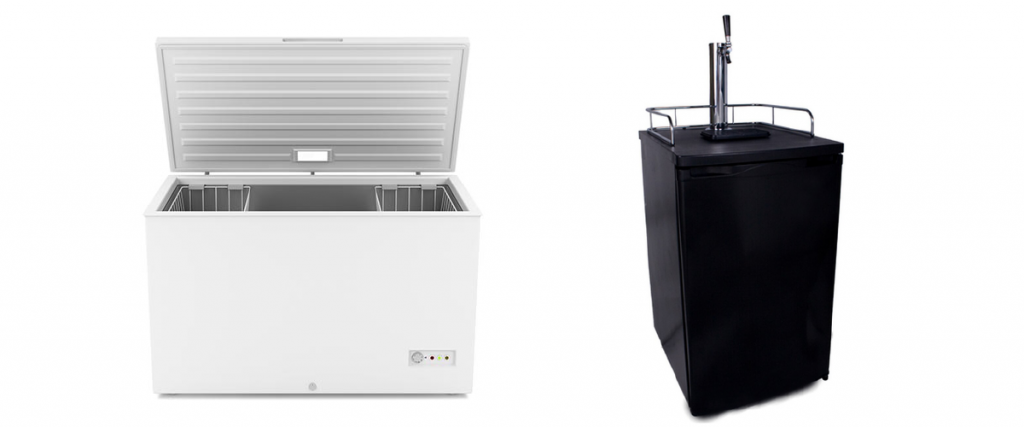
So what do you need to build a Keezer?
Draft Beer Components
- Fridge (shank) conversion kit, everything you need to install the draft side, except CO2 cylinder and kegs.
- CO2 Cylinder – A five pound will dispense about 30- five gallon kegs or about half that if you force carbonate.
- Kegs -You can use either ball lock or pin lock, make sure you use genuine CMB disconnectsfor best results (the above link for Fridge conversion kits includes these)
- 15/16 Hole Saw for drilling holes in collar. OK, this is also in “Tools Needed” below, but it is the only tool I recommend purchasing from Kegconnection.com because it is inexpensive and can ship with your other components. These things work great!
- Temperature Controller – This allows you to regulate the chest freezer at fridge temperatures. Here are comparison videos on two of the most popular models:
- Inkbird temp controller video
- Anvil temp controller video
- Drip Tray (optional, but recommended) we used a drip tray with a high back splash that included holes for the shanks. This is a very nice option and helps you align your shank holes perfectly.
Basic components purchased at hardware or building supply store
- A chest freezer. These come in many different sizes and price start at below $200 and go up from there. The main thing to look at is the size. You need to determine how many kegs will fit in the keezer. Also, some have a shelf over the compressor, so you may not be able to put kegs in all of the space. I normally put my CO2 and regulators on the side with a shelf. For our example build we used a 14.8 cubic foot Frigidaire chest freezer. This was large enough to hold 8 kegs, plus our CO2 cylinder, regulators, and other items This chest freezer was in the $500 range. Again, this is a personal preference and depends on how many kegs you want to tap/store.
- Boards for your collar. The size and length you will need will depend on what size chest freezer you use, but most people use either a 2×4 or 2×6 for the base of the collar and then use a 1×6 or 1×8 for the facial or front trim board. These boards are where you will drill your holes for your beer shanks, so make sure your keezer will have enough height for the top of the kegs and the disconnects (home brew kegs) or coupler (commercial kegs). In the vast majority of Keezerseither a 2×4 or 2×6 will give you enough height, so aesthetics are your main concern here. We used 2×6 boards on our build with an oak 1×10
- Other optional material includes, foam board, foam board adhesive, outdoor decking screws, paint, etc.
Tools Needed
You don’t need a lot of tools for this project. It is nice to have power tools, but if you own a limited supply or no tools you can get by with hand tools (except for a drill, you need a drill)
- Chop Saw, circular saw or hand saw. These will all work, but a hand saw will take longer
- Measuring tape, square and pencil
- Drill and bits, plus a 15/16 hole saw to drill holes for shanks.
- Impact driver or at least a bit holder and bits for your drill. Many deck screws come with a bit in the package.
- Box cutter if you are insulating the collar
Let’s get started on the build!
The first step is to remove the lid from your keezer.
- See if your kegerator has a cord going into the lid, if so this is probably for a light. You will need to unplug this from the box. It may have a plug inside after you take off cover (see video above for an example)

- Now you need to remove the screws from the hinges, do this on the bottom (on the box, not the lid). These have large springs, but if the lid is closed, they should be relaxed and not pop out when you remove the screws. Just be careful in case your unit is different.

- Now remove the lid completely from the box and set in a safe place.

Now you are ready to build your internal collar and attach it to the chest freezer.
- Measure the length and width on the top of the keezer. You want the outside of the boards (2×4 or 2×6) to match up with the outside wall of the chest freezer. You want the longer boards to go to the end with the boards on the end fitting into the longer boards to form a rectangle. I will mention one more time that after you read this, please watch the video for clarification.

- Once the boards are done you will want to screw them together using 3 ½” outdoor decking screws. These are made to connect these types of boards and they are resistant to moisture, which keezers will produce. I always drill pilot holes before driving in screws to prevent the wood from splitting.

- Next you want to use a high quality silicone chalk and run it on the top of the walls of the keezer. Then lay the frame on the top of this. The silicone will not only seal between these two pieces, but also act as an adhesive. Make sure you are lined up on all side. It will squish out on the inside and outside, this is good! Use your finger to smooth it out on the inside and outside.


- If you are going to insulate your collar it is not time to cut your foamboard. Once you have it attached (using foamboard adhesive and clamps -see video) you can also use some of the adhesive or your chalk to finish the edges. You can also use a high quality house paint to paint the board, this makes it not only look better but it also serves as a moisture barrier.

Next you need to build and attach your 1” trim board. Your trip board is what people see when they see your Keezer. This board defines your keezer. I like to use a nice oak or some other hardwood for this board. In our example we use a 12” wide board. This is because in our build we wanted it to also support the drip tray. Many people use a board that is only 2” wider than your frame boards. This is a personal decision.
- First carefully cut your boards so they will fit over your frame boards in the front and on both sides. You do not need a board on the back. Make sure the board on the front has enough overhang so the sideboards fit flush against it.


- Attach your boards using glue and finish screws (or nails). You can just glue it, but I highly recommend screws, so it does not work loose over time. Remember, this is the main part that holds your collar on your keezer. This locks it into place! You can fill in the holes left by finish screws with putty and they will not be visible after you finish the wood.

- Now it is time to finish the wood. You use stain or leave it natural. We did the final finish with Danish Oil, but you could also use a Polyurethane finish. I like the fact that you can reapply Danish Oil right over the original coat anytime you want to “revive” the finish.

Cutting hole for shanks, with or without drip tray.
Before you drill out the holes, you need to decide what type of drip tray you will be using. If you are using a drip tray like the one in the video (Click here to see a four faucet version). This decision will determine how you drill your holes.
- Drilling holes with high walled drip tray – Use clamps or a friend to hold drip tray in the front center of collar. Then mark center of each hole. Remove drip tray and drill holes using your 15/16 hole saw. The shanks themselves will hold drip tray on, there is not need to use additional mounts. You can add the shanks now and have them ready for the beer lines!



- If you are not using the drip tray you will need to Drill holes in line with where you want them on the board. They are typically spaced 3” from center to center. This is particularly important if you want to add a drip tray in the future. Once the holes are drilled you can install the beer shanks so they will be ready for beer lines in the next steps.
Adding beer lines, gas lines and other hardware.
- Now you can add your beer lines to the shanks. These will have come assembled when you ordered them, so just put the black washer in the beer nut and screw the nut to the end of the shanks. The other end should have disconnects (or a coupler if you are dispensing commercial beer) and they are ready to go. You may want to label which line is for what tap, for easy tap identification in the future. I used numbers from left to right.
- Now you need to place your regulator and CO2 cylinder in the Keezer and mount your air distributor. Do NOT screw into the sides of the Keezer when you mount your air distributor, screw into the wood collar. The sides could have coolant lines and if you hit one you will need a new chest freezer.
Reattaching the lid
- To reattach the lid you just have to line it up and screw the lid onto the new collar. Pushing the hinge down can be challenging, It is helpful to have a friend hold this down while you screw it in.
- The light – if your chest freezer lid came with an internal light, you now must decide that to do with it. Remember that many of these have an internal switch that turns the light off and on as the lid is open and closed. This means that it just needs electricity to work. However, keep in mind that the electricity operating your unit is being cut on and off by the temperature controller. This means that you need to make a separate cord ( you can buy this at a hardware store, premade) that plugs directly into the wall. Another option is to just put wire nuts on the wires and don’t connect them. This means you won’t have an internal light, but it is actually easy to see inside the keezer with light from the room. If you do not have electrical work experience have a certified electrician, make a cord for you.



Have questions? Contact us at [email protected] and we can assist you.
Have you enjoyed this article? Please visit us at www.homebrewhappyhour or download our weekly podcast on your favorite podcast app. Have a question or suggestion for improving this article? Email me: todd AT homebrewhappyhour DOT com
Homebrewing is our passion and we are here to help the homebrewing community.
How to Make Beer at Home: Extract Brewing Explained (Part 1 of 2)
Hello, this is Todd Burns with Homebrew Happy Hour.
I am assuming this is your first batch of beer and my goal is to make it as easy as possible to learn to brew an extract or mini mash. I am also going to assume you will watch the accompanying video, but I also want to bullet point the steps, so you will have a reference while brewing. Keep in mind that brewing is not difficult, it is a lot like cooking. You simply follow the recipe and use equipment specific to brewing beer. Last but not least, remember to “Relax and have a Homebrew!”
Here are the steps:
Ingredients:
Your ingredients can vary, but they will always contain the main four ingredients; water, malted barley (and possible other grains), hops and yeast.
Equipment:
Talking about equipment in homebrewing is a slippery slope. You can brew beer with very simple equipment, but you can also get into complicated equipment. For today we will keep it simple. The kit we are using is the Complete Homebrew Kit from Kegconnection. This is a great kit because of all it has in it, but if you are really on a budget and already have a soup pot big enough to brew beer in(4 to 5 gallons is recommended), you can pick up a Brewer’s Fundamental kit for well under $100. You can see all of Kegconnection’s kits by clicking here.
Steps to Brewing (Watch video for more detailed information):
- Heat 2 ½ gallons of water to 155°F. (or to the temp recommended in your instructions)
- Add your steeping grains (using a grain bag) and steep (like a tea bag) for about 20 minutes. Remember that your water temperature will go down when you add grains, just maintain it at about 155°F. Don’t stress out if it is within 5 degrees or so.
- Remove your brew kettle from the burner (this will help avoid a boil over). Add ½ or more of your other fermentable. This could be either liquid or dry. You just pour either of these in while stirring. Make sure it is stirred well before starting your boil.
- Return your brew kettle to the burner and bring your wort (this is what the liquid in your pot is not called!) to a boil. As you approach boiling temperature watch the wort closely and make sure it does not boil over or you will have a mess. Reduce temperate as you approach your boil. Remember that you want a nice steady boil, but not one that can result in a boil over. The boil step will typically last 60 minutes, although some styles use a 90 minute boil. There are two ways to time your boil. One would be to set your timer for the amount of boil time (say 60 min). The other is to set your timer to go off when your next hop should be added.
- Now it is time to add your first hops. Keep in mind that recipes can have different “hop schedules (times you add hops). Most have you add hops at the beginning. These are the bittering hops. They might be called a “60-minute hop” because they boil the entire 60 minutes. Your other hops will be added for “flavor” and “aroma” and the length of time they are in the boil will be dictated by which of these three sensory goals they have. Your recipe will tell you when to add each hop.
- When you have 5 minutes left in your boil you can add your whirlfloc tablet. This will help you clarify the beer later. This is not required, but a good practice. You may also have a hop addition at this point.
- Towards the end of the boil or after the boil is completed (called flame out) add the remainder of your fermentable (The dry malt extract “DME” or the liquid malt extract “LME”)
- Once you have completed the boil it is time to start cooling down your wort so you can add yeast. There are a lot of methods for cooling down your wort in including using a wort chiller, but when you are extract brewing you can also get away with just cooling your wort down using ice in your kitchen sink. You will also be adding water to bring your recipe up to the proper number of gallons (normally 5 gallons) I normally use RO (reverse osmosis) water or boil water and then cool it down before adding. If you get the water cold this will help cool your wort faster as well. You want to cool your wort to yeast pitching temperature. The temperature you will need will be listed on your recipe and on most likely on the yeast package you are using. I know that all Imperial Yeasts (my personal favorite) give a range of fermentation temperatures.
- *****IMPORTANT***** Once your water drops below the boiling temperature you want to be very careful not to contaminate it. This means that anything that touches the beer must be sanitized. I use San Step Sanitizer. It is no rinse and works great even in hard water. Start sanitizing everything you will use going forward as you cool your wort.
- Now that your wort is cooled down it is time put it in the sanitized fermenter bucket and add the yeast. With an extract recipe you can also add the extra water after the wort. The two liquids combined should give you the temperate you need to ferment so determine what the temp should be with the two liquids combined.
- Aerate the wort by using your large stirring spoon to “push” down firmly into the wort and introducing air (oxygen). Do this for a minute or two and then pour in your yeast. Aerate additionally for a minute or so and then put your bucket lid on the fermenter, making sure it is firmly sealed. Next, put your three piece airlock “bubbler” in the hole of the lid. You want to add water or sanitized water to the bubbler up to the line in the main chamber.
- Documentation – Make sure you write down all the information from your brew day. You can use your recipe sheet. If your got wet during the process you can print out a new one by going to any of the recipes on www.kegconnection.com.
Congratulations, you just brewed your first beer!
There are two more steps in the process. The first is transferring your beer into the secondary for clarification and the last step is either bottling or kegging your beer. For now, you just want to watch your beer and make sure the airlock is starting to “bubble” in the next 24 hours or so. Then you let it ferment until it is ready to enter the secondary.
Making extract beer dryer, dry hop sterilization, upgrading to PVC free beer lines, & a question about creamer faucet functionality – Ep 216
Howdy, Homebrewer!
Welcome back to our Homebrew Happy Hour podcast… the podcast where we answer all of your home brewing questions and discuss anything related to craft beer!
A SUBTLE REMINDER:
If you appreciate the things we do here at Homebrew Happy Hour, consider joining our Patreon community! Not only will you be supporting our efforts, but you’ll also receive exclusive perks such as HUGE discounts on HomebrewSupply.com and Kegconnection.com, welcome packs with our merch, discounts to BrewersFriend.com, and lots more! Click the link and join today — https://www.patreon.com/bePatron?u=21132635
On Today’s Show:
I’m, once again, graced by Todd and James’s knowledge as they help me tackle your submitted homebrewing questions. We start off by taking a question from an avid extract brewer who is curious is he can do anything to a favorite recipe of his to help make the finished beer “a little bit dryer”. Then, we talk about the importance of sterilizing additions (dry hopping) and how we go about doing that. That was followed by a question about upgrading to PVC-free beer lines and if the more premium liquid lines would allow for leniency regarding how often one needs to clean said lines (spoiler: Todd says clean them every two weeks!). Finally, we wrap up the show with a conversation on creamer functionality in CMB faucets and why it’s a good thing. This was right up James’s alley!
We want to hear from you!
If you have a question that you’d like us to discuss on a future episode, please click on the “Submit a Question” link at the top of our website or you can now call in your questions via our questions hotline @ 325-305-6107 and leave your message after the beep. This is a friendly reminder that, if we choose your question for a future episode, we give you a $25 gift card to that episode’s sponsor!
Let us know what you think and enjoy the show!
cheers,
joshua
————————–

Today’s show is brought to you by HomebrewSupply.com! HBS has all of your favorite recipe kits, fresh ingredients, and homebrew equipment in stock. Homebrew Happy Hour listeners can visit HomebrewSupply.com and use the promo code “HHH” to receive 5% off your order.
Sign up for Kölsch Cup 2021 and see if you can be crowned King of the Kölsch! Details available at KolschCup.com !

Thank you to our show’s sponsor, Imperial Yeast, for supporting us and the homebrewing community. Learn more about why we LOVE Imperial Yeast by checking out their entire line, available at HomebrewSupply.com: https://homebrewsupply.com/ingredients/yeast/imperial-yeast/
————————–
Become a Patron! Reminder that these episodes are ultimately made possible because of YOUR support. Consider becoming a member of our newly launched Patreon page and receive perks such as merch, exclusive group access and content, recipes, and some tiers even get monthly recipe kits mailed to you! https://www.patreon.com/HomebrewHappyHour
Kolsch conditioning, choosing proper glassware, buying used kegerators, & brewing a retail recipe kit for competitions – Ep. 215
Nice to have you back, friend!
Welcome to our Homebrew Happy Hour podcast… the podcast where we answer all of your home brewing questions and discuss anything related to craft beer!
A SUBTLE REMINDER:
If you appreciate the things we do here at Homebrew Happy Hour, consider joining our Patreon community! Not only will you be supporting our efforts, but you’ll also receive exclusive perks such as HUGE discounts on HomebrewSupply.com and Kegconnection.com, welcome packs with our merch, discounts to BrewersFriend.com, and lots more! Click the link and join today — https://www.patreon.com/bePatron?u=21132635
On Today’s Show:
James and Todd are back on the program with me to help answer your questions! Specifically, we talk about the turn around “most” kolsches take to get from grain to glass. Mind you, the fastest turn around almost always has to include force carbonating in a keg, so – sorry if you prefer to bottle!
Next, we take a question about the importance (if any) of using the “right” glassware for specific styles of beer. As a man with fancy taste, I would love to tell you all that I ALWAYS have the proper glassware when I’m drinking my delicious (or, sometimes, not delicious) homebrew craft beer but that’s actually not always the case. In fact, if you follow our Instagram page, you’ll see that I’m frequently drinking everything out of an alt glass or a kolsch stange. I’m ready for your hate mail but I prefer the smaller volume (7 to 9oz per pour, for me) and the ease of using an “uncomplicated” glass. It fits me well but I’m open to your opinions and Todd and James offered their own in this episde.
Then, we have a listener write in who purchased a used kegerator from Facebook marketplace and now he isn’t sure what to do. We get this kind of question a lot and it’s shows like this when I’m most thankful for Todd and James because they usually get to the point with what should be your priorities and what you shouldn’t have to worry about for a while.
Lastly, we take a question about using established homebrew recipe kits from your favorite retailer and submitting that beer into competitions. Is it frowned upon? If you’re in competitions does that mean you should only submit completely original recipes? We talk about this but I would love to hear what you think in the comments below.
We want to hear from you!
If you have a question that you’d like us to discuss on a future episode, please click on the “Submit a Question” link at the top of our website or you can now call in your questions via our questions hotline @ 325-305-6107 and leave your message after the beep. This is a friendly reminder that, if we choose your question for a future episode, we give you a $25 gift card to that episode’s sponsor!
Let us know what you think and enjoy the show!
cheers,
joshua
————————–

Today’s show is brought to you by HomebrewSupply.com! HBS has all of your favorite recipe kits, fresh ingredients, and homebrew equipment in stock. Homebrew Happy Hour listeners can visit HomebrewSupply.com and use the promo code “HHH” to receive 5% off your order.
Sign up for Kölsch Cup 2021 and see if you can be crowned King of the Kölsch! Details available at KolschCup.com !

Thank you to our show’s sponsor, Imperial Yeast, for supporting us and the homebrewing community. Learn more about why we LOVE Imperial Yeast by checking out their entire line, available at HomebrewSupply.com: https://homebrewsupply.com/ingredients/yeast/imperial-yeast/
————————–
Become a Patron! Reminder that these episodes are ultimately made possible because of YOUR support. Consider becoming a member of our newly launched Patreon page and receive perks such as merch, exclusive group access and content, recipes, and some tiers even get monthly recipe kits mailed to you! https://www.patreon.com/HomebrewHappyHour
An interview with cider homebrewer Corrie Purser – Ep. 214
What’s up, homebrewer?
Welcome to our Homebrew Happy Hour podcast… the podcast where we answer all of your home brewing questions and discuss anything related to craft beer!
A SUBTLE REMINDER:
If you appreciate the things we do here at Homebrew Happy Hour, consider joining our Patreon community! Not only will you be supporting our efforts, but you’ll also receive exclusive perks such as HUGE discounts on HomebrewSupply.com and Kegconnection.com, welcome packs with our merch, discounts to BrewersFriend.com, and lots more! Click the link and join today — https://www.patreon.com/bePatron?u=21132635
On Today’s Show:
It’s been a while since we’ve done a “Homebrewer Showcase” episode so I wanted to start the new year on the right foot and do more of these types of shows.
Today, cider maker and gluten free homebrewer Corrie Purser (better known as Miss_Cider on Instagram) joins me to talk all things cider and living in the world of craft beer and cidering while having to be gluten free.
She’s an extremely bright young woman who was a blast to talk to and I definitely learned a lot on this week’s show!
We want to hear from you!
If you have a question that you’d like us to discuss on a future episode, please click on the “Submit a Question” link at the top of our website or you can now call in your questions via our questions hotline @ 325-305-6107 and leave your message after the beep. This is a friendly reminder that, if we choose your question for a future episode, we give you a $25 gift card to that episode’s sponsor!
Let us know what you think and enjoy the show!
cheers,
joshua
————————–

Today’s show is brought to you by HomebrewSupply.com! HBS has all of your favorite recipe kits, fresh ingredients, and homebrew equipment in stock. Homebrew Happy Hour listeners can visit HomebrewSupply.com and use the promo code “HHH” to receive 5% off your order.
Sign up for Kölsch Cup 2021 and see if you can be crowned King of the Kölsch! Details available at KolschCup.com !

Thank you to our show’s sponsor, Imperial Yeast, for supporting us and the homebrewing community. Learn more about why we LOVE Imperial Yeast by checking out their entire line, available at HomebrewSupply.com: https://homebrewsupply.com/ingredients/yeast/imperial-yeast/
————————–
Become a Patron! Reminder that these episodes are ultimately made possible because of YOUR support. Consider becoming a member of our newly launched Patreon page and receive perks such as merch, exclusive group access and content, recipes, and some tiers even get monthly recipe kits mailed to you! https://www.patreon.com/HomebrewHappyHour
Landraces in hops & barley, Festbier vs Marzen, & Horst Dornbusch returns! – Ep. 213
Howdy, friend!
Welcome to our Homebrew Happy Hour podcast… the podcast where we answer all of your home brewing questions and discuss anything related to craft beer!
A SUBTLE REMINDER:
If you appreciate the things we do here at Homebrew Happy Hour, consider joining our Patreon community! Not only will you be supporting our efforts, but you’ll also receive exclusive perks such as HUGE discounts on HomebrewSupply.com and Kegconnection.com, welcome packs with our merch, discounts to BrewersFriend.com, and lots more! Click the link and join today — https://www.patreon.com/bePatron?u=21132635
On Today’s Show:
Back by popular demand, we are proud to welcome back Horst Dornbusch! We had such a good time on episode 199 and you all seemed to love him too, so we begged and pleaded and broke him down until he agreed to do the show again. He brought a wealth of information on topics I, honestly, never even thought COULD be interesting but Horst somehow made me pay attention. ALSO – this is like the only episode where I maybe speak for a total of 2 minutes… so, this is looking to be our most popular episode ever published!
Kidding aside – enjoy our latest interview with the incredible Horst Dornbusch.
We want to hear from you!
If you have a question that you’d like us to discuss on a future episode, please click on the “Submit a Question” link at the top of our website or you can now call in your questions via our questions hotline @ 325-305-6107 and leave your message after the beep. This is a friendly reminder that, if we choose your question for a future episode, we give you a $25 gift card to that episode’s sponsor!
Let us know what you think and enjoy the show!
cheers,
joshua
————————–

Today’s show is brought to you by HomebrewSupply.com! HBS has all of your favorite recipe kits, fresh ingredients, and homebrew equipment in stock. Homebrew Happy Hour listeners can visit HomebrewSupply.com and use the promo code “HHH” to receive 5% off your order.
Thank you to our show’s sponsor, Imperial Yeast, for supporting us and the homebrewing community. Learn more about why we LOVE Imperial Yeast by checking out their entire line, available at HomebrewSupply.com: https://homebrewsupply.com/ingredients/yeast/imperial-yeast/
————————–
Become a Patron! Reminder that these episodes are ultimately made possible because of YOUR support. Consider becoming a member of our newly launched Patreon page and receive perks such as merch, exclusive group access and content, recipes, and some tiers even get monthly recipe kits mailed to you! https://www.patreon.com/HomebrewHappyHour
Our 2020 year-end show! – Ep. 212
Happy New Year, friend!
Welcome to our Homebrew Happy Hour podcast… the podcast where we answer all of your home brewing questions and discuss anything related to craft beer!
A SUBTLE REMINDER:
If you appreciate the things we do here at Homebrew Happy Hour, consider joining our Patreon community! Not only will you be supporting our efforts, but you’ll also receive exclusive perks such as HUGE discounts on HomebrewSupply.com and Kegconnection.com, welcome packs with our merch, discounts to BrewersFriend.com, and lots more! Click the link and join today — https://www.patreon.com/bePatron?u=21132635
On Today’s Show:
James is out this week working hard and in charge BUT, surprise surprise, Mr. Chief Keg Washer himself was able to join me as he returned sooner than I thought he would from his vacation.
Todd helped me take your questions this week and, thankfully, most of them were softballs which helped me curate a pretty fun-filled year-end show. We talked about our favorite batches of beer that we brewed this year, our favorite equipment (and least favorite equipment) we used in 2020, we discussed whether we’d invest money in the pre-boil or post-boil (fermentation or cold side) of brewing if we could go back and do it all over again, and, of course, we touch on our 2021 brew year resolutions.
We want to hear from you!
If you have a question that you’d like us to discuss on a future episode, please click on the “Submit a Question” link at the top of our website or you can now call in your questions via our questions hotline @ 325-305-6107 and leave your message after the beep. This is a friendly reminder that, if we choose your question for a future episode, we give you a $25 gift card to that episode’s sponsor!
Let us know what you think and enjoy the show!
cheers,
joshua
————————–

Today’s show is brought to you by HomebrewSupply.com! HBS has all of your favorite recipe kits, fresh ingredients, and homebrew equipment in stock. Homebrew Happy Hour listeners can visit HomebrewSupply.com and use the promo code “HHH” to receive 5% off your order.
Thank you to our show’s sponsor, Imperial Yeast, for supporting us and the homebrewing community. Learn more about why we LOVE Imperial Yeast by checking out their entire line, available at HomebrewSupply.com: https://homebrewsupply.com/ingredients/yeast/imperial-yeast/
————————–
Become a Patron! Reminder that these episodes are ultimately made possible because of YOUR support. Consider becoming a member of our newly launched Patreon page and receive perks such as merch, exclusive group access and content, recipes, and some tiers even get monthly recipe kits mailed to you! https://www.patreon.com/HomebrewHappyHour
Color SRM on New England IPAs, step mashing, when to measure your grains, & using a Foundry for primary fermentation – Ep. 211
How’s it going, homebrewer?!
Welcome to our Homebrew Happy Hour podcast… the podcast where we answer all of your home brewing questions and discuss anything related to craft beer!
A SUBTLE REMINDER:
If you appreciate the things we do here at Homebrew Happy Hour, consider joining our Patreon community! Not only will you be supporting our efforts, but you’ll also receive exclusive perks such as HUGE discounts on HomebrewSupply.com and Kegconnection.com, welcome packs with our merch, discounts to BrewersFriend.com, and lots more! Click the link and join today — https://www.patreon.com/bePatron?u=21132635
On Today’s Show:
Todd is out on vacation but, thankfully, Mr. Carlson was able to join me this week as we take your questions and discuss our best answers! We also go over some of the stuff going on behind the scenes and what’s happening in our Patreon community.
On this episode, we discuss one of our favorite styles of beer – New England IPAs! Ok, if you’re new to the show you might not catch my sarcasm there… but, even though it isn’t our thing, New England IPAs are still a very popular style and a listener was curious on how to best achieve the color profile when he’s brewing one. Also, we take a question about step mashing (how to do it, when to do it, what it does), a question on the appropriate time to measure your grains (before milling, after milling, etc), and we wrap up with a question about using an all-in-one electric system (specifically, the Anvil Foundry) as a vessel for primary fermentation. It’s a ton of content packed into this one episode and we hope you enjoy it as much as we did!
We want to hear from you!
If you have a question that you’d like us to discuss on a future episode, please click on the “Submit a Question” link at the top of our website or you can now call in your questions via our questions hotline @ 325-305-6107 and leave your message after the beep. This is a friendly reminder that, if we choose your question for a future episode, we give you a $25 gift card to that episode’s sponsor!
Let us know what you think and enjoy the show!
cheers,
joshua
————————–

Today’s show is brought to you by HomebrewSupply.com! HBS has all of your favorite recipe kits, fresh ingredients, and homebrew equipment in stock. Homebrew Happy Hour listeners can visit HomebrewSupply.com and use the promo code “HHH” to receive 5% off your order.
Thank you to our show’s sponsor, Imperial Yeast, for supporting us and the homebrewing community. Learn more about why we LOVE Imperial Yeast by checking out their entire line, available at HomebrewSupply.com: https://homebrewsupply.com/ingredients/yeast/imperial-yeast/
————————–
Become a Patron! Reminder that these episodes are ultimately made possible because of YOUR support. Consider becoming a member of our newly launched Patreon page and receive perks such as merch, exclusive group access and content, recipes, and some tiers even get monthly recipe kits mailed to you! https://www.patreon.com/HomebrewHappyHour
